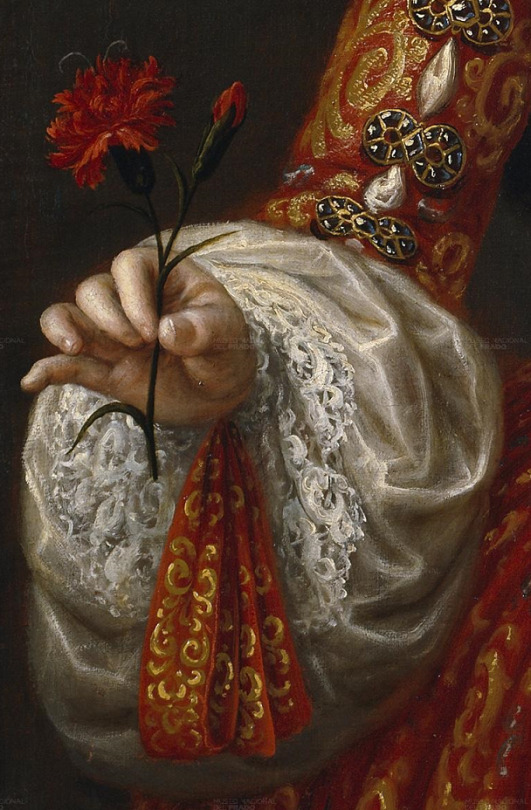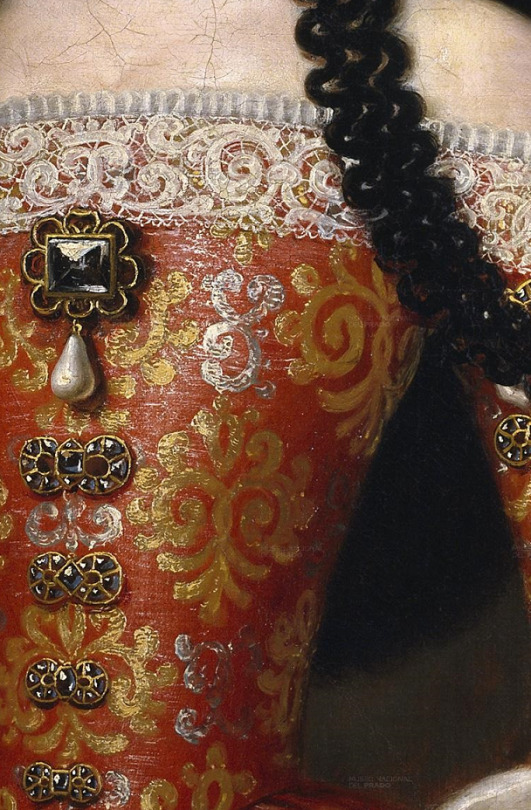Photo

J.F. Willumsen
A Mountain Climber
1912
669 notes
·
View notes
Photo


Details of Mary Louise of Orleans, Queen of Spain, 1679, by José García Hidalgo (1646-1717)
6K notes
·
View notes
Photo

Henri Matisse - La Musique (oil on canvas, 1939)
150 notes
·
View notes
Photo



Alphonse Mucha (1860-1939)
Alphonse Mucha was a Czech artist, known mostly from his beautiful and elegant illustrations.
While his enjoyment for drawing began early in his childhood, it is said that Mucha’s true zest for art came about during his secondary schooling, which took place at the Saint-Peter’s Cathedral in Brno. Confronted with the beauty of Baroque painting, Mucha had an epiphany of sort, which lead him to become the artist that he did.
Mucha’s works are distinct in their decorativeness, as his jobs included working as a decorative painter and designer for companies, until he became freelance. Thanks to his talent, an employer even supported Mucha enough for his training at the Munich Academy of Fine Arts. He held some jobs following his formal education, the most prominent of which being a poster which featured a famous actress at the time, Sarah Bernhardt. This earnt Mucha quite a bit attention, as his works even become known as The Mucha Style (otherwise called, Art Nouveau.)
Above: Autumn, 1896, Summer, 1896, and Winter, 1896 by Alphonse Mucha.
1K notes
·
View notes
Photo

Gustav Klimt_ Beech Grove I_1902 Galerie Neue Meister, Dresden
115 notes
·
View notes
Photo

Reuben Tam - Moon and Shoals 1949
5 notes
·
View notes
Photo


Old Man’s Afternoon, 1947, and Father and Parrot, 1948, by Will Barnet (1911-2012)
92 notes
·
View notes
Photo

Francis Picabia - Transparence, c.1933
Gouache, watercolour and charcoal on paper, 50 x 64.5 cm
210 notes
·
View notes
Photo





Bronzino, Deposition of Christ (details), 1540-1545
451 notes
·
View notes
Photo



“I paint myself because I am so often alone and because I am the subject I know best.” - Frida Kahlo
3K notes
·
View notes
Photo



Francis Bacon - 3 studies for a portrait of George Dyer
Follow my Instagram account here: evokes_art
269 notes
·
View notes
Photo




VOGUE covers by René Bouché
8 notes
·
View notes
Photo

Minerva (detail) by Hendrick Goltzius, 1596.
4K notes
·
View notes
Text
Some Awesome Female Avant-Garde Artists
Now I have always been a very big fan of unconventional art movements. Not only do I appreciate how those art movements have influenced what we see today, but the history that prompted them is rather revolutionary. Today, I want to appreciate the women who aren’t as well-known as the great Frida Kahlo. This post is more focused in the late 1910’s, to the 1930’s period. It is to honour some of the out-of-the-box women that I admire so much, from all sorts of movements. Here we go!

Helen Lundeberg (1908–1999)
Not just a formally taught and talented artist, but Lundeberg was actually one of the founders of what would be known as the Post-Surrealism art movement, later leaning to abstraction in the 1950’s. She was not only talented, but extremely intelligent, earning a place at Stanford University for “brilliant children.” Now while I said I would focus on the lesser-known artists, Lundeberg is a rather more famous one. However she is a tough one to leave out. She was especially famous during the 1930’s. She was in charge to create multiple murals, and her exhibitions (including her early solo exhibits) were very successful. It’s interesting to see her works evolve during her life, yet remain distinctly recognizable as hers.
Above: Portrait of Inez, 1933, by Helen Lundeberg (1908–1999).

Sophie Taeuber-Arp (1889-1943)
Certainly a woman ahead of her time, Sophie Taeuber-Arp’s artwork as a painter, sculptor, textile designer, furniture, interior designer, architect and dancer all scream “modern woman.” She studied different art forms, primarily textile art, formally in some areas. She was quite heavy in the Dada scene, yet her Constructivist works are probably her most recognizable. Her use of colours of her geometric forms are what draw the eye. Taeuber-Arp’s talent and hard work earned her a position teaching weaving and other textile arts at the Zürich Kunstgewerbeschule (Zürich University of the Arts). She was a woman that appreciated art in all its forms, and many appreciated the way she presented them. In fact, her flexibility and talent is appreciated today, as she is, in fact, the only woman on the current series of Swiss banknotes in Switzerland.
Above: Oval Composition with Abstract Motifs, 1922, by Sophie Taeuber-Arp (1889-1943).

Marguerite Zorach (1887-1968)
Another intelligent artistic lady on the list, Marguerite Zorach became interested in art at a very young age. She, luckily, was blessed with very supportive parents that encouraged her to study everything related with liberal arts. People generally don’t get as unconventional as Zorach really was. Influenced by friends such as Picasso and Matisse, she is naturally recognized for her Fauvist work. Even her husband commented “I just couldn’t understand why such a nice girl would paint such wild pictures.” It may sound like he didn’t approve, but her husband (William Zorach) loved the way she stood out from a crowd. While she settled her “wild” painting side and became more focused on her family, she was titled president to the New York Society of Women Artists. Throughout her life Zorach experimented in all kinds of art media - even making clothes. You can certainly tell the different influences and evolution of her works. Because of this she received mixed criticism throughout her artistic years, yet her works are remembered today.
Above: Death of a Miner, 1930, by Marguerite Zorach (1887-1968).

Pan Yuliang (1899-1977)
Truly a woman to differ from the mainstream (and possibly my favourite on this list). Pan Yuliang is considered China’s “first woman in the country to paint in the Western style.” Unlike many of the woman included in this list, Yuliang did not come from a family of prominence. Just at the age of 14, she was sold by her uncle to a brothel and forced into prostitution. In an amazing turn of events, however, she was noticed by a kind wealthy man who brought her freedom. Becoming his second wife and adopting his last name, he sponsored her education and allowed her artistic abilities to flourish. Because of her talent, fast learning, and hard work, she was accepted in not only the Shanghai Art School, but also numerous schools in Europe. This even included Italy’s Roman Royal Art Academy. Pan Yuliang wasn’t particularly loved by all in China, however. Her works caused some outrage in her home country, and she eventually settled in France, where her paintings were more appreciated.
Above: Detail of Self-portrait, 1936, by Pan Yuliang (1899-1977).

Aleksandra Ekster (1882-1949)
Another abstract woman to appreciate, Russian painter Aleksandra Ekster uniquely used her skills for design purposes. Because of her extraordinary designs, she was required to work in numerous fabulous cities, from places in her home country of Russia, to the romantic Paris, France. Thanks to her prominent and wealthy family, Ekster was free to study art formally, later graduating from Kiev Art School. Her life was the ultimate art fantasy, as she organised meetings at her studio for Russia’s “intellectual elite.” This included artists, writers, and poets. While she never stuck with just one movement, but varied in many revolutionary avant-garde art movements of her time, her style is completely unique and consistent. She is known distinctly for her fashion designs, which were not only completely wearable, but also very memorable.
Above: Costume design for Romeo and Juliette, 1921, by Aleksandra Ekster (1882-1949).
2K notes
·
View notes







